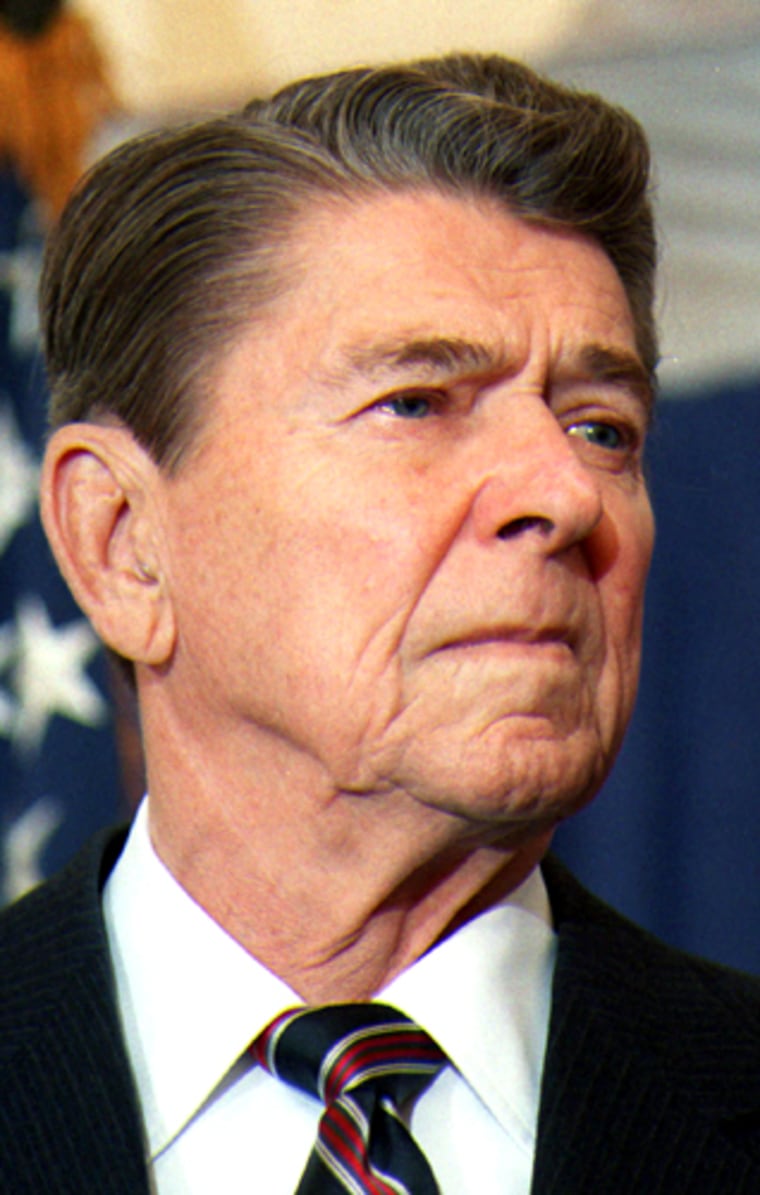The man who proclaimed that it was "morning in America" has reached his final sunset.
To borrow one of the most elegant phrases he ever spoke from the Oval Office, today, Ronald Reagan, in the words of the poet John Gillespie Magee, has “slipped the surly bonds of earth to touch the face of God.”
When he said those words more than 17 years ago, he helped steer the nation through the tragedy of the explosion of the space shuttle “Challenger.” But today, the nation faces it’s own challenge—remembering, assessing, the legacy of the 40th president.
Ronald Reagan lost his decade long battle with Alzheimer’s disease this afternoon.
The 93-year-old former chief executive died at his home overlooking Los Angeles, the residence that has been his primary refuge since his poignant announcement in 1994 that Alzheimer’s was forcing him to retire from public life.
The two-term President led a conservative revolution that changed the face of politics not only here in the United States but throughout the world. A champion of supply side economics, Reagan presided over both sweeping tax cuts and deepening deficits.
And while his legacy will forever be marked by the scandals of the Iran-Contra affair, Ronald Reagan’s presidency began with the release of the Iran hostages.
While it began with preparations for conflict with a country, the Soviet Union, that he called “The Evil Empire,” it will also certainly bear much of history’s credit for that country’s final decline... and the freedom of Eastern Europe that blossomed in its wake.
It is a grim and stark reality that Ronald Reagan’s family—and Ronald Reagan himself—had nearly a decade to prepare for the end.
He wrote to the American public, in 1994, that he had been diagnosed with Alzheimer’s. His “presence” came and went in the intervening ten years, and those times when he could recognize his friends and family, and his beloved wife Nancy, diminishing in frequency as the insidious disease and old age took more and more of him.
Only a month ago, Nancy Reagan again broke with the current Republican president to urge more extensive research into cures and treatments for the disease, via the use of stem cell innovations.
And during all this, the preparations have been made for the inevitability of this day.
It is expected that Mr. Reagan’s body will be removed from his ranch to an area funeral home in Southern California. Then, as family and staff and friends gather at the Ronald Reagan Presidential Library in Simi Valley, the body will be brought there, lying unofficially in state for another day.
Mr. Reagan’s remains are to then be brought to Washington for the formal state services—to lie in state at the Capitol Rotunda—with, it is presumed, public access, for as long as three days with a funeral at Washington’s National Cathedral. It’s the first state funeral for a President since the death of Lyndon Johnson in 1973. Richard Nixon did not get a state funeral. Gerald Ford, Jimmy Carter, George Herbert Walker Bush, and Bill Clinton, are of course, all still living.
Then, as it will to all men, the ultimate ending will come for Ronald Reagan.
After the state funeral in Washington, he will be sent home, via Vandenberg Air Force Base in California—just before sunset for burial at the Reagan Library. The man whose campaign slogan “Morning in America”... will be laid to rest at sunset.
Watch MSNBC's continuing coverage on MSNBC.
